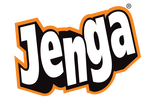 Loading... Please wait...
Loading... Please wait...- Home
- Best ideas for playing and customizing Jenga® GIANT™
- Jenga® GIANT Therapy questions
Jenga® GIANT Therapy questions
Posted by Jenga® GIANT™ on 07/15/2021

Life is often challenging and can fill us with doubt and anxiety. We can become overwhelmed or distressed. To cope, we seek out distractions or feel-good moments, but sometimes we might need the help of a professional therapist. You might be surprised to discover that a Jenga® GIANT™ game can be used as a therapeutic tool. It can be used to facilitate connection and trust, and can help patients explore their state of mind and process their emotions.
Playing with a Jenga® GIANT™ game is entertaining and fun. It can also play a part in a therapy session. Therapists can use this deceptively simple game for group therapy and for play therapy with children. They can use it to build rapport with their patients, breaking down barriers and helping people feel at ease when talking about themselves.
A Jenga® GIANT™ game can be a great asset to a therapy practice. A patient’s tough emotional issues might surface while building the Jenga® GIANT™ tower, enabling therapist and patient to work through them together while playing a game! Discover the Jenga questions for therapy with us!
Discover how can your Jenga® GIANT™ game can help you
Discover four therapy games with Jenga® GIANT™ that can help you answer hard questions in therapy.
Jenga® GIANT™ therapy questions: Exploring Emotions
Working with emotions can be tricky. We don’t always want to expose our feelings, and sometimes it’s hard to recall what we felt in a certain situation. Your Jenga® GIANT™ game can help you recall and navigate your emotions by answering a range of therapy-style questions.
To experiment with these questions, do this: paint the 54 blocks with six different colors. You will end up with nine blocks of each of the six colors. Assign an emotion to each color (e.g., red = anger, blue = sadness). Then play the game with your patients, asking questions related to the specific emotion. For example, when they pull out a blue block, ask them to talk about a recent time they felt sad. When they pick a red block, you might choose to give them a chance to let loose. Mix the pieces, build the Jenga® GIANT™ tower, and get ready to explore emotions.
Jenga® GIANT™ therapy questions: Building Rapport
Building relationships and trust takes time, but therapists must accomplish these things quickly. Incorporating a therapy game with Jenga® GIANT™ as a rapport builder can sharply reduce the time it takes to connect and build trust. Imagine patient and therapist playing a Jenga® GIANT™ game together and coming up with a question each time they take out a block from the tower. They can start with straightforward questions like “What is your favorite color?” and move on to more complex and searching questions. Not only will they get to know each other but they will enjoy themselves while playing with a Jenga® GIANT™ game.
Jenga® GIANT™ therapy questions: Icebreakers
The first minutes of a therapy session are often spent catching up with a patient. A Jenga® GIANT™ game can make this fun. Try adding numbers to the Jenga® GIANT™ blocks using a Genuine Chalk Ink® Wet Wipe Marker and assign a question to each number. The questions should relate to the week just passed. For example, “What was a challenge you faced last week?” or “Who made you feel good this past week and why?” As blocks are chosen randomly, so are the questions. Asking potentially searching questions while in game playing mode can help therapist and patient ease into a session and create a relaxed and receptive mood.
Jenga® GIANT™ therapy questions: Group Therapy
Therapy questions are sometimes easier to answer in groups and a Jenga® GIANT™ game can be a great tool for group therapy. Playing a therapy game with Jenga® GIANT™ in a group and using accompanying therapy questions about emotions can help patients build relationships and open up with the group. They may feel comfortable answering difficult emotional questions because they feel supported by the people in the group. A bonus is that the Jenga® GIANT™ game can provide fun and excitement while everyone tries not to crash the tower!
Jenga® GIANT™ therapy questions: Imagining the Future
Asking ourselves where we expect to be in one year or ten can be a way to develop and grow, but it’s something we don’t often do, or don’t do effectively. We might ask ourselves future-oriented questions, sometimes with good intentions, sometimes half-heartedly, but we often get distracted before we come up with useful answers. A Jenga® GIANT™ game can help us formulate and answer questions about the future.
To do this, add therapy questions to the Jenga® GIANT™ blocks with a Genuine Chalk Ink® Wet Wipe Marker. You can ask questions like “Where you do see yourself in five years?”, “What will the state of a particular relationship be ten years from now?”, or “Do you see yourself alone or with a partner in the near future?” Using your Jenga® GIANT™ game to answer these future-oriented Jenga® GIANT™ therapy questions can ease the stress around them. Approaching them in a playful way with your Jenga® GIANT™ game can help take the pressure off and encourage people to answer truthfully. So, build the tower, watch it crash, and enjoy using your Jenga® GIANT™ blocks to help see into the future!
Jenga® GIANT™ therapy questions can help people ask and answer emotional questions in an interactive and enjoyable way. Therapists can use the Jenga® GIANT™ therapy questions to facilitate therapy sessions. Explore the therapeutic potential of your Jenga® GIANT™ blocks! Discover our giant Jenga® games at jengagiant.com, pick the one you like most, and don’t forget to have GIANT-sized fun!
